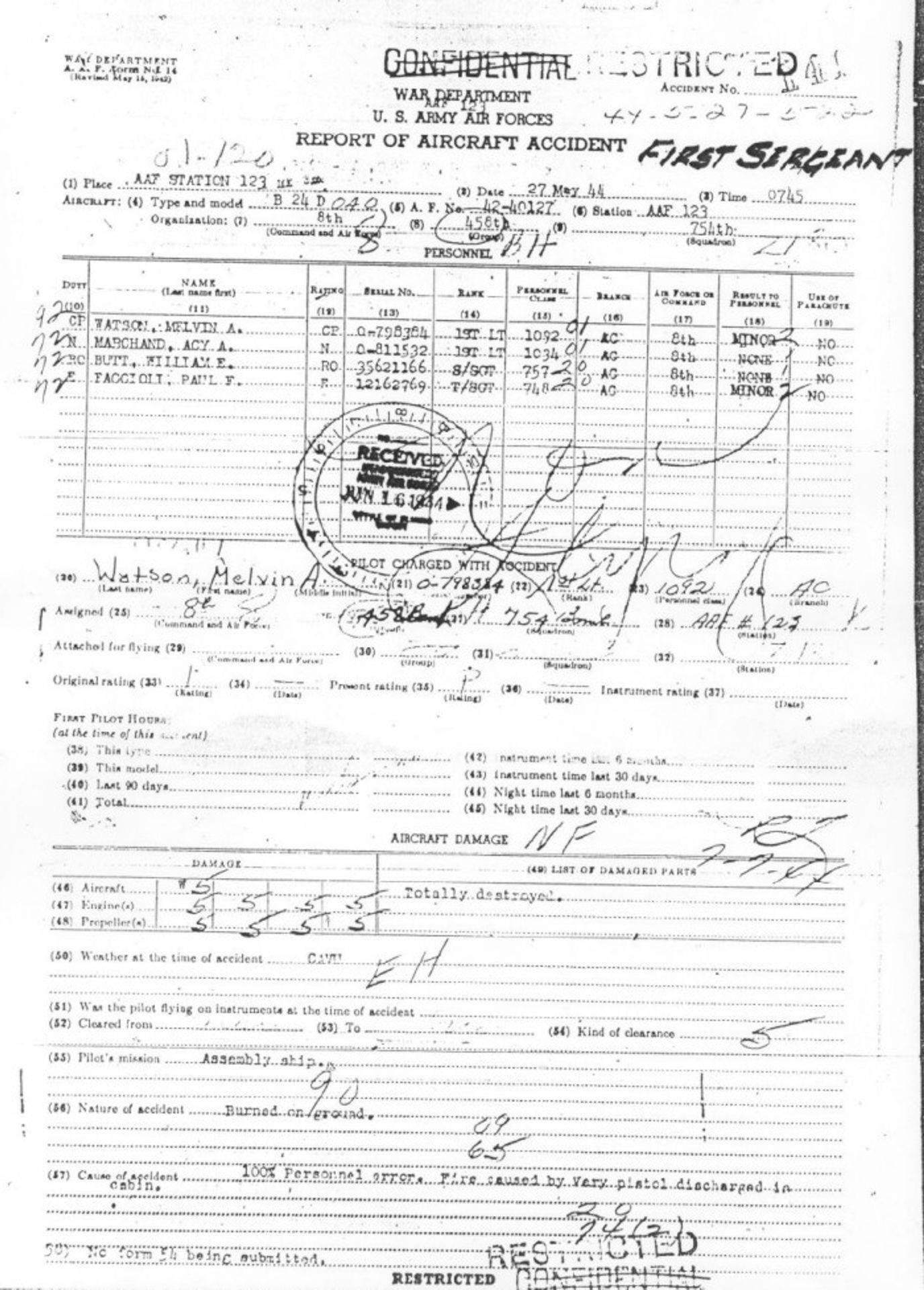458th Bombardment Group (H)
First Sergeant – 458th Assembly Ship
March – May 1944
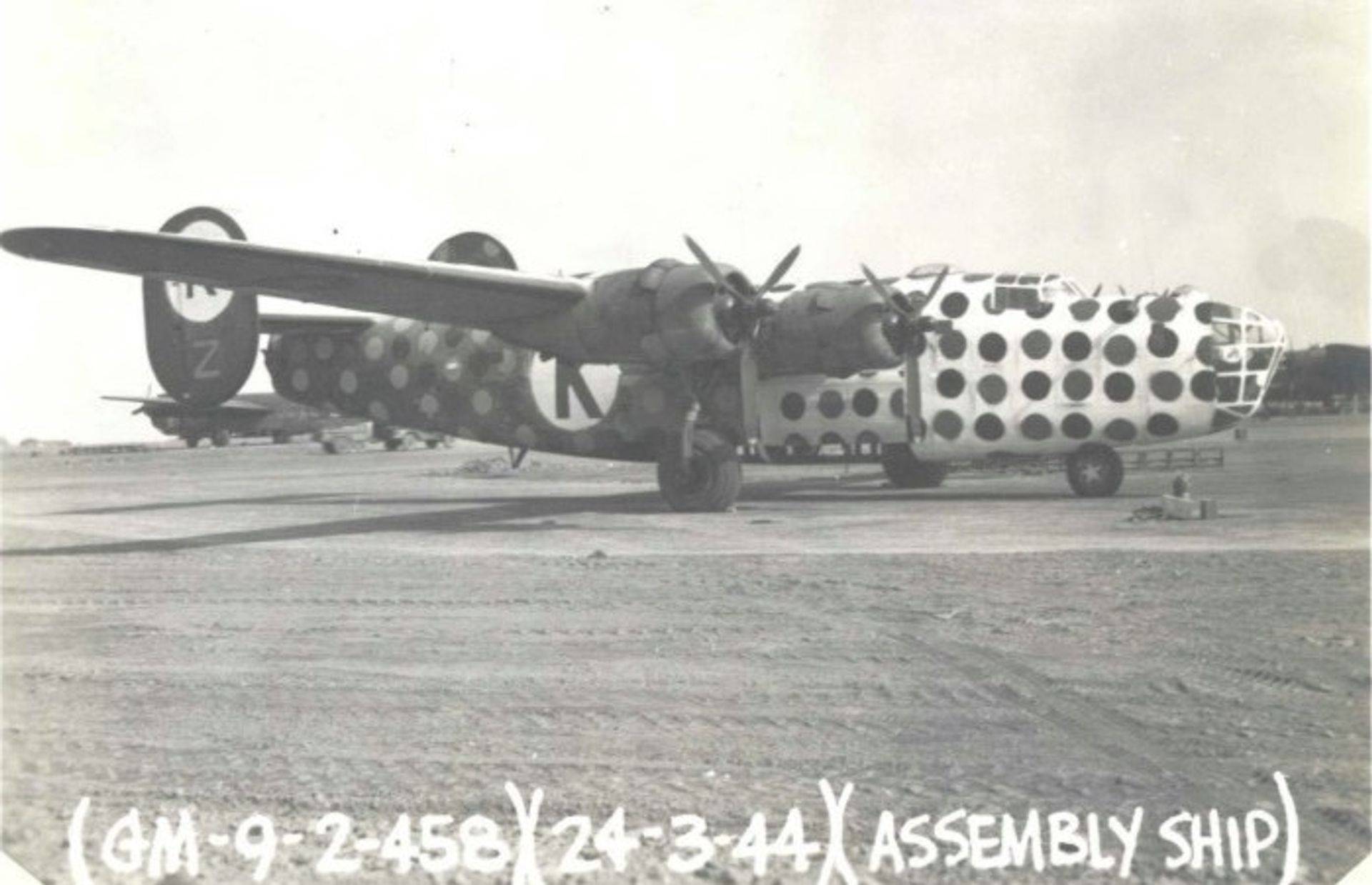
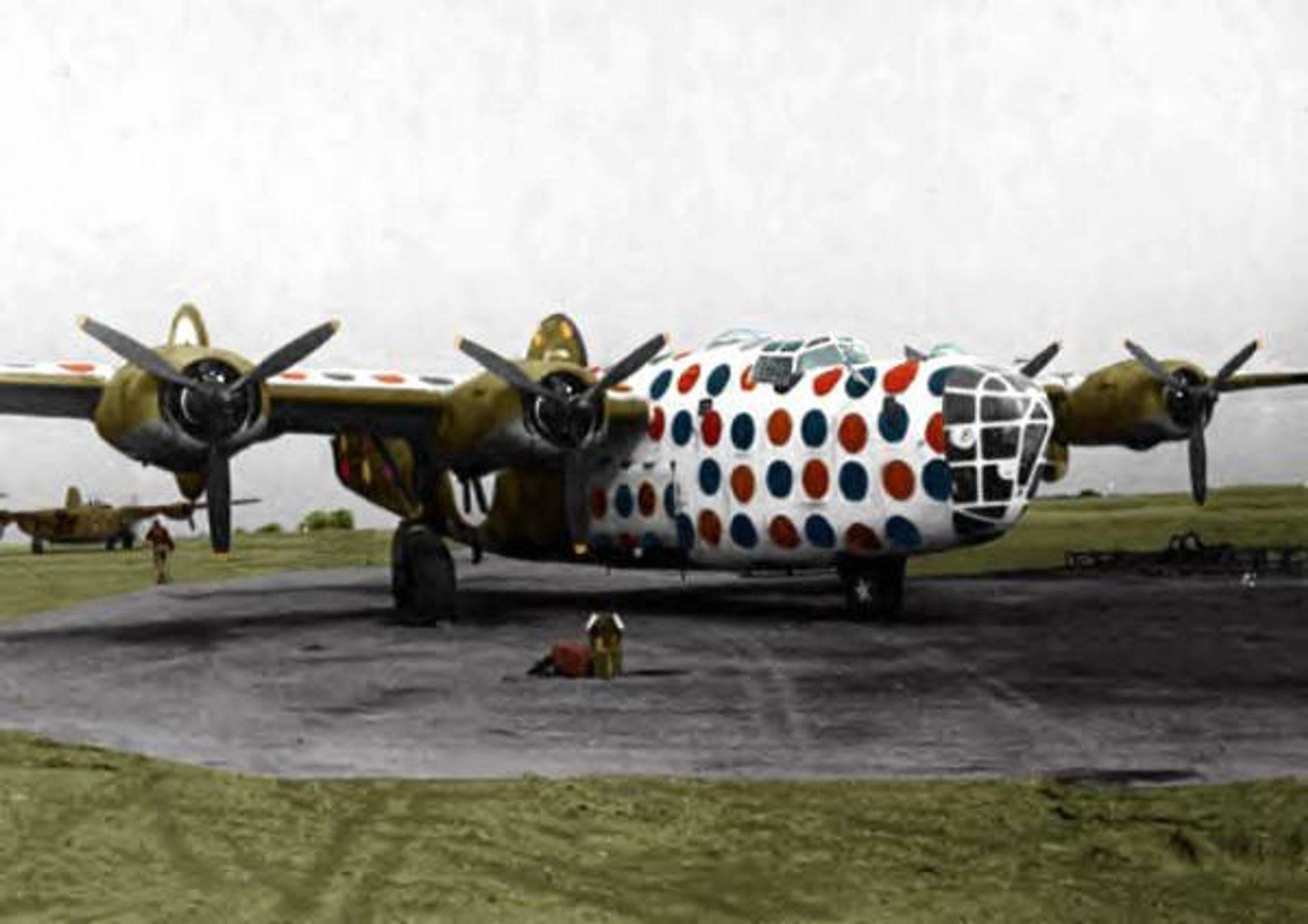
Painted Old Lady
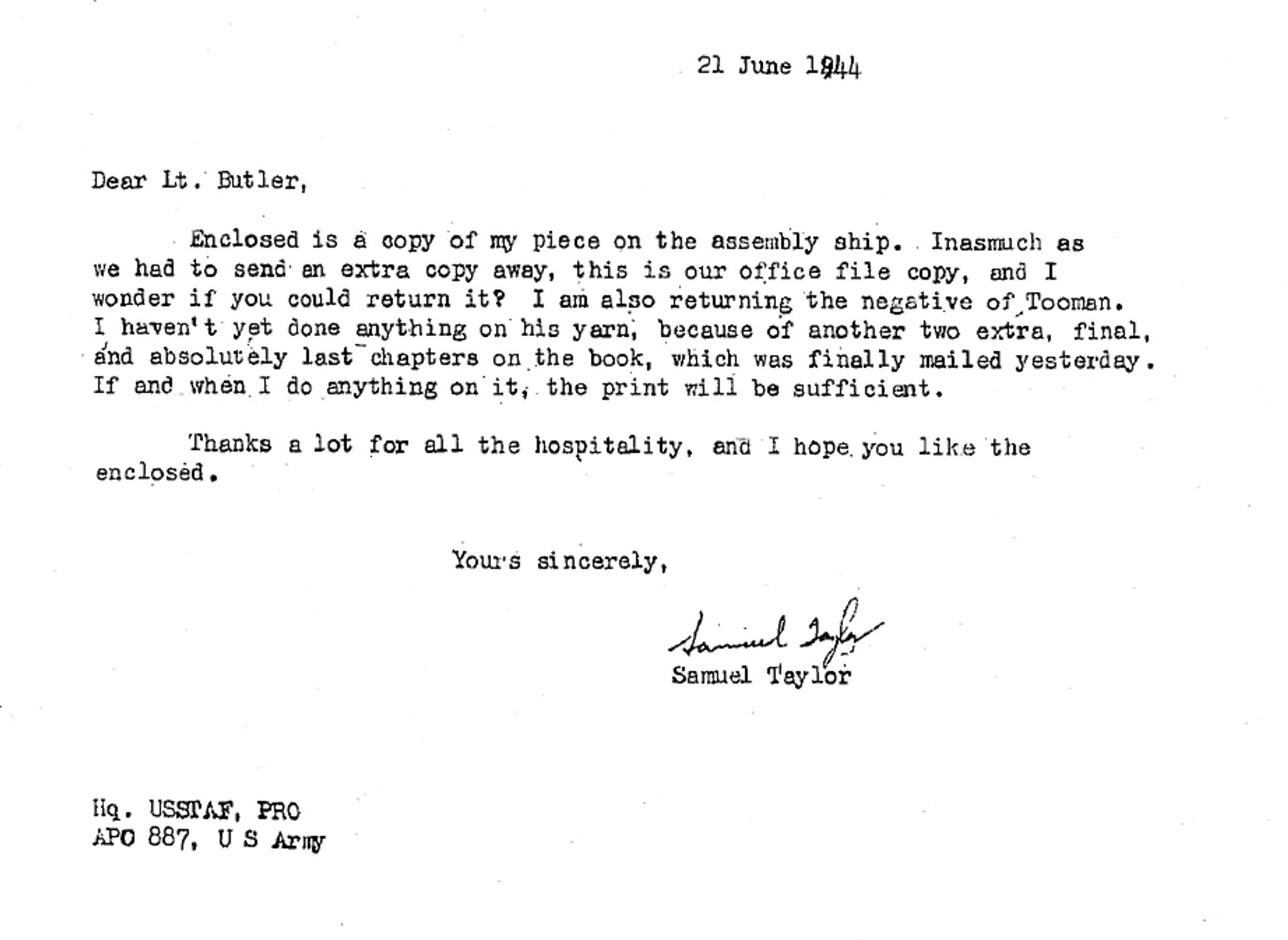
By
A Clee-track pulls her from the dispersal area in the early morning. It is just breaking dawn. In the heavy fog she can’t be seen fifty yards away, which, perhaps, is just as well. She is put first on the concrete strip intersecting the end of the runway, and other bombers of the group are lined up behind her.
She will be first to take off.
She is a curious sight, and rather a pathetic one. The front half of her is painted white, the rear half gray-green. On this background are big dots of red and yellow.
She is the assembly ship, a traffic cop of the air; her job came into being as daylight bombing grew from an attack by a few dozen planes to the coordinated might of a thousand or more.
When she first came to England, aerial traffic cops weren’t needed. That was a long, long time ago, in the history of mass bombing. It was sometime in 1942, according to the little plate on the dashboard. She arrived in England spanking brand new, a B-24 Liberator, made by Consolidated Aircraft. A proud crew flew her in those early flights. Who are they? Nobody seems to know. Nor where. They don’t even know the name of this Old Lady. Though somebody left her record on the cowling. Somebody with a touch of sentiment didn’t paint over that. It shows that she went on 17 missions over Germany. That was in the days when they went out naked, without fighter escort. When they depended on their own guns and their own guts, and the sturdiness of their plane to bring them home. The Old Lady brought them home, seventeen times.
And on those seventeen missions, her gunners shot down seven Nazi fighters. Seven swastikas are there. Her crew must have been pretty proud of her. They must have had some name on her, perhaps some design or picture. But the paint covers that now; nobody knows.
And then she was needed in the Mediterranean. Things were popping down there. The little bombs denoting missions are blue for that theater. Where she went the first five times is not known. But the next blue bomb has “Ploesti” lettered along it by some amateur painter. The next one has “Rome”. The final bomb is big, twice the size of the others. Whether it denotes some great raid, or whether it merely means the last mission, nobody knows.
There is an Italian insignia alongside the Nazi crosses. So the Old Lady got one victory there. There is also a barrage balloon that she shot down somewhere.
And by this time she was obsolescent. She was very, very old for aerial combat. She didn’t have things her younger sisters were arriving with. They could have stripped her for parts, robbed her to a skeleton and then cut up the rest of her for making new bombers. Or again, she might have gone down in battle, fighting to the end. But she was too sturdy. She always came back.
Did her proud crew know what was in store for her? Probably not. Her guns and armor were taken out. Her turret mechanism and bombing apparatus were removed. Then she was painted up like a circus clown and sent to a new group who didn’t know her or what she’d done.

Courtesy: Mike Bailey
The morning gradually brightens, but the fog hangs low. The bombers are lined up on the concrete strip that makes a “T” intersection to the west end of the runway, half on one side, half on the other; they will turn into the runway alternately, one by one following the Painted Old Lady into the heavy overcast.
At 0510 hours a string of six-by-six trucks come bumping across the grass, stopping along the long line of bombers while members of the crews pile out, heavy in flying gear; their Mae Wests stand out in the fog, looking curiously like starched yellow vests of a grotesque full-dress costume that might be seen on a burlesque stage. Briefing is over; the target, flak area, rendezvous points of fighter escort are known. The chaplain has offered prayer, asking that whatever the day has in store, it will be met as men.
The crew of the assembly ship changes day by day. The Painted Old Lady is flown by anybody with nothing else to do. The pilot today is a Major, a squadron leader, who will leave on pass after the flight. He hasn’t showed up yet, being over at flying control, checking with Met on the weather and with operations. The overcast is so bad the mission might be scrubbed.
The co-pilot is a Lieutenant who last week walked away from a crash landing in which four of his crew were killed. He is slender, lean-faced, with his garrison hat crushed in like an extreme flier’s drape, until it looks like a beret with a peak. [This is Lt Walter Landers]
The navigator today is a survivor of a Liberator that was shot to pieces over Germany and went down in the Channel. He was one of three pulled off a dinghy by Air Sea Rescue. [This is Lt Gasper DiSimone]
Two enlisted men complete the skeleton crew. The radio operator has replaced a casualty of an old crew and flown seven missions with them before their tour of operations was complete and they were taken off ops. The engineer is a red-headed Sergeant just arrived in England, and has never been on a mission. They are all waiting for assignments. The engineer takes a form from the crew chief and fills in the names of today’s crew. The co-pilot signs it. A diagonal red line across a little square on the form indicates that the spotted plane is not in absolutely perfect condition but is able to fly. The crew chief examines a bit of oil on the cowling of number three engine.
The fog very gradually lifts. In an hour visibility is two hundred yards. A Jeep appears and the Major climbs out. The mission will not be scrubbed. The crew climbs inside and takes up stations. The engines break into a roar and the Painted Old Lady trembles, as if eager. She turns into the runway, gathers speed and takes off into the fog.
The pilot circles in the dense gray cloud, gaining altitude. Nothing can be seen until, at eight thousand feet, it begins breaking up. The cloud cover is below at another thousand feet, dull and gray, with whitish ridges and dark valleys. The sun is a great unblinking eye overhead, but cold, and filtered through an invisible haze. The plane keeps circling upwards. Electric suits are turned on. The crew goes on oxygen.
At fourteen thousand feet the plane quits climbing, and circles alone above the cloud layer. In a few minutes the first of the Liberators, heavy with bombs and gasoline and armor and armament, comes out of the clouds, gaining altitude slowly. Here comes another, three more. In a few minutes the sky is filled with bombers; they appear out of the overcast like swarming bees.
The need for the Painted Old Lady becomes apparent. The effectiveness of a bombing mission and the protection of its crew members depend on formation flying. Bombing has grown to such proportions that the strategic locations of England’s limited area are literally crowded. Bombers by the hundreds are circling up through the dense clouds in this locality alone, flying on instruments. Every plane is assigned its position in its particular group. But up here in the haze the distinguishing marks on the tail sections cannot be seen. The great painted fins of the Liberators, that are so enormous on the ground, are mere specks.
Flares appear from a plane, like brilliant soap bubbles, trailing down slowly. This is the leading plane of the Spotted Old Lady’s group; she takes up a position near it, the Major signals with his right fist and the radio operator shoots flare pistols that fit into holes in the body of the plane. The circling bombers can see these flares, and, as far as anything can be seen, the brilliant spots of the old Liberator can be recognized.
The air is crowded. Over this particular spot three groups are forming at different levels, each led by an old bell weather painted outlandishly which spews out flares. A huge identifying letter on the side is outlined with electric lights, for missions airborne before dawn during the short days of winter.
The Painted Old Lady proudly leads her group as the bombers fall in formation behind one by one, like chicks after a mother hen. Two thousand feet below is another group making formation, and two thousand feet below that, another. On the outer rim of visibility are minute specks of other groups. A Fortress comes by, looking for its group; a last Liberator lumbers full speed from the north like a frightened biddie which has strayed, and completes the group.
And then the three groups head off in formation to make rendezvous with other Wings of the great bomber pattern. The Spotted Old Lady turns back. It might be imagination, or just an air current, for the sky is rough today, that makes her seem to hesitate, unresponsive to the controls, as the pilot pulls her away from the lead position and begins circling down toward the home base. She’ll never go over again, never know the tight excitement of combat, the violent shaking of the flak, the buoyant sensation of releasing the heavy bomb load and heading for home.
She circles into the dense clouds. A half hour later the precise pattern of English fields and hedges appears below, filmy in the fog, tiny towns clustered at the crossroads. Old brick walls, roofs of slate and thatch. She comes onto the runway, sets down and taxies to a stop. It is still early morning; her work is over.
Overhead through the fog comes the drone of bombers heading out for Germany. The crew climbs out. As the crew chief arrives, the Major indicates number three engine, whose cowling is dripping oil.
“I tightened the gaskets yesterday, but I’ll check again,” the crew chief says. “She’s getting pretty old.”
“Yeah,” the Major says, “She’s pretty old.”
They walk away. Somebody else will fly the Painted Old Lady tomorrow.

Reproduced from 458th Bomb Group Records
B-24D-30-CO 42-40127 Z First Sergeant
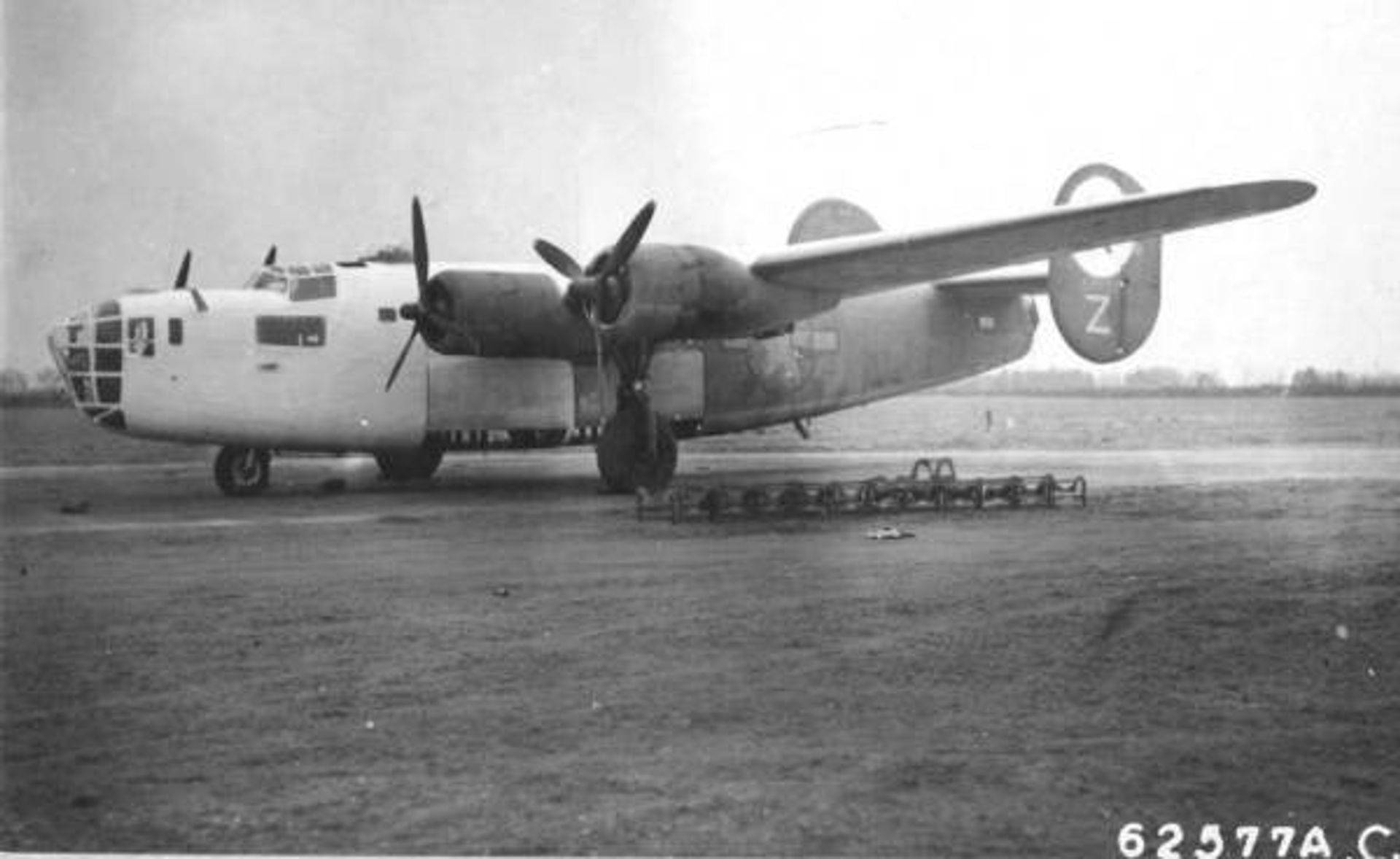
Ploesti veteran gets a new paint job

Notice “scoreboard” with large horizontal bomb for the Ploesti raid. This was NOT painted over.
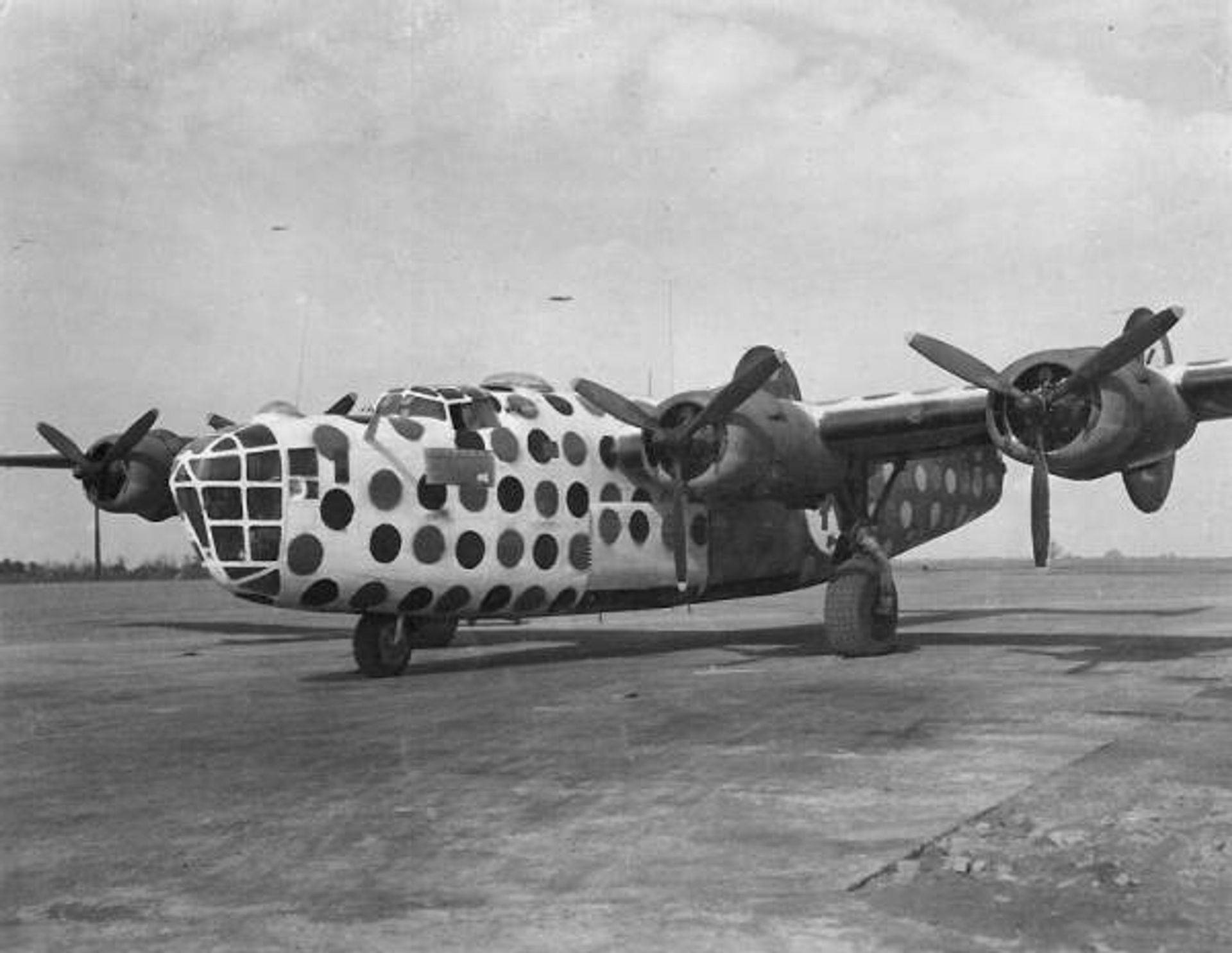
Ready for Assembly duties
May 27, 1944 – Flare Mishap on the Runway
DESCRIPTION OF ACCIDENT
On the morning of 27 May 44, B 24 D, 42-40127, was totally destroyed by fire at 0745 while it was parked on perimeter strip, 20 feet east of R/W 23, just prior to take-off for assembly ship mission from AAF Station 123. No Engines were running.
There were four men present in A/C just prior to starting engine #3. The engineer was in the co-pilot’s seat. The radio operator was on the flight deck, checking two Very pistols and the Navigator was trying to start the APU. The radio operator loaded one pistol and laid it down. As he was laying the second loaded Very pistol down it fired into a box of flares. He did not remember what touched the trigger. In a short time the fire caused by the discharging flares became out of control and the heat was terrific. There was an attempt made to get and use a fire extinguisher but it was unsuccessful. The radio operator and navigator escaped through the bomb-bay with no injury. The pilot and engineer dived through the bomb-bay receiving 2nd degree facial burns. In a short time the aircraft was in uncontrollable blaze and soon after burned completely.
Recommend: Very pistols will not be loaded until put in their holders.
Signed
John A. Hensler
Major, Air Corps


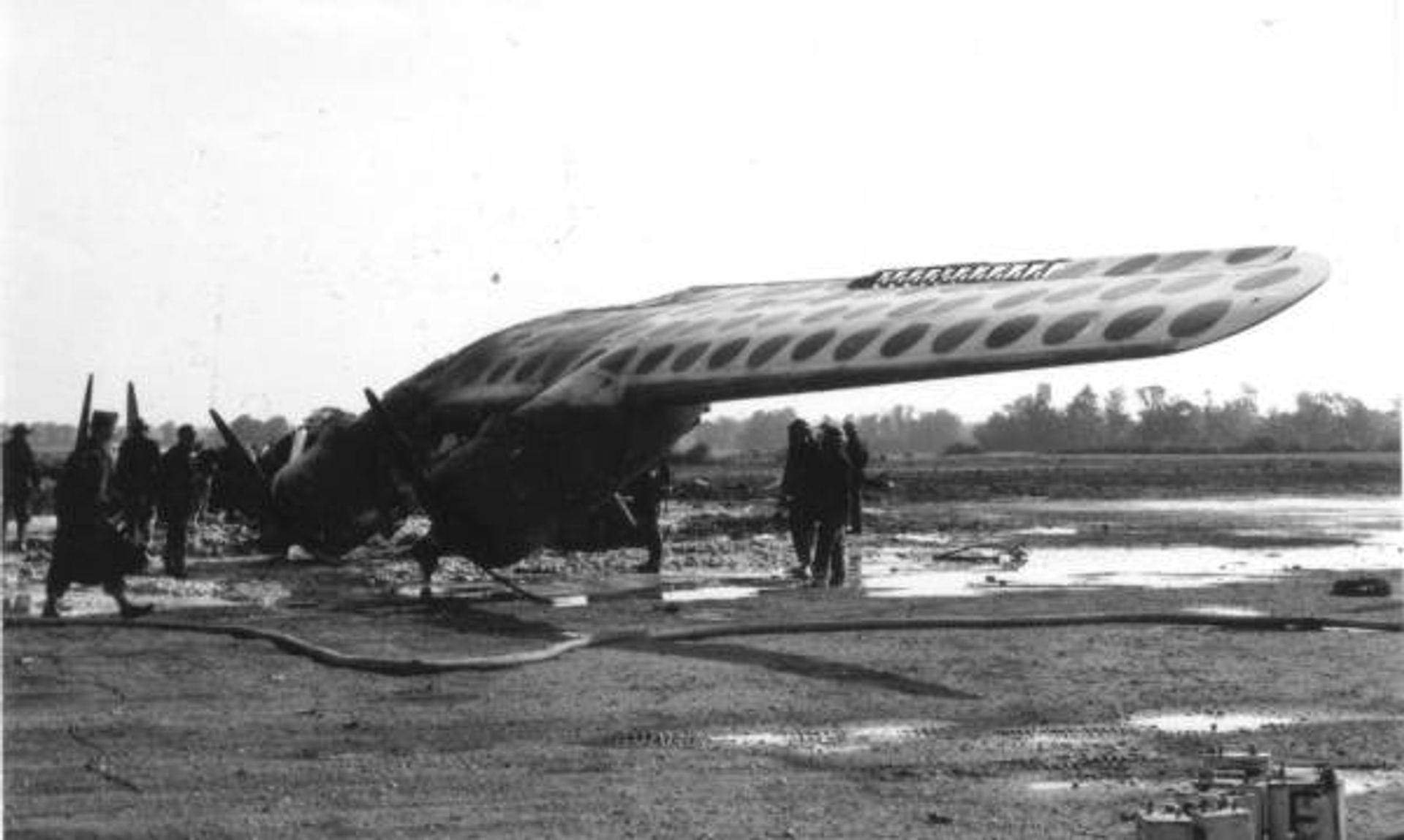
Photos: Mike Bailey, Chris Albert, Rick Rokicki
Captain Chuck Merril Crew – 93rd Bomb Group

Prior to becoming the 458th Bomb Group’s assembly ship, First Sergeant flew under the name Thar She Blows “Again” in the 93rd Bomb Group. Chuck Merril and crew of the 329th Squadron flew this aircraft to Ploesti and back. The following information on the Merril crew and the photograph above come from Pat Schenk, Ploesti researcher.
What is known is that the Chuck Merril crew, 93rd BG 329th BS flew this plane to Ploesti. This became the regular aircraft of this crew sometime after their original Lib, “Thar She Blows” 41-23658, was salvaged March 8, 1943, hence the name Thar She Blows “Again“. Maxwell AFB has lost the record card for 127 so I cannot say exactly how it came to the 458th.
I have visited with members of this crew and I can say that this plane collected dozens of holes over Ploesti, including what has been described as an 88mm hit in the turret well aft of the bomb bay. No ball turrets were carried so the crew used this space to store their heavy flying clothes and other supplies. The shell detonated in those clothes and the concussion was such that it knocked all the gunners to the floor and knocked tail gunner Boyd Way from his turret. True story!
The information that I have is that the Chuck Merril crew flew a total of nine missions in 42-40127. This crew were original members of the 93rd and all survived the war except Albert Oser who was KIA while flying with a make-up crew. Two other Ploesti veterans were lost with him. Oser is unique in that he was an unofficial “ace” with six confirmed e/a destroyed and he surely has to rank up near the top of 8th AF gunners. He was the only member of this crew to get a Purple Heart on Ploesti when he was struck in the back by a flak fragment. His parachute harness stopped it, but he had a massive bruise.
The following excerpt is from the report of the 93rd’s Engineering Officer after Ploesti describing the damage to 42-40127: “Bulkhead in fuselage badly damaged by 40mm. Elevator control cables damaged, AFCE rudder, elevator and trim tab control cables damaged. Left vertical stabilizer damaged by light flak. Leading edge left wing damaged by barrage balloon cable.”
The needle props are interesting. Supposedly, this change was made around B-24D 41-23970 & 42-63752. I have evidence that other planes were retrofitted in the field due to the better performance at low altitude. The PB4Y-2 Privateer [U.S. Navy] went back to these blades for that reason. 42-40128 had the wide blades so that is what made me question if First Sergeant was 42-40127. Chuck Merril did have some pull in the 329th Squadron so he must have had them changed.
The following article was written by David H. Klaus, webmaster at Dragged Through the Mouth of Hell at Ploesti. David contacted me in October 2017 about First Sergeant and the info that I had that this aircraft had previously been named “Thar She Blows “Again”.
———————————————–
Why Thar She Blows “Again” Did NOT Go To Ploesti
Literally every book on TIDAL WAVE claims B-24D-30-CO 42-10127, a verified Ploesti participant, was named either “Thar She Blows” or Thar She Blows “Again”.
The confusion comes initially from the 93rd Bomb Group’s 1 July 1943 letter listing the nicknames for all 93rd ships in the desert, which states 42-40127 was named “Thar She Blows”. Further confusion has arisen since it’s conclusively documented that Capt Chuck Merrill flew 42-40127 to Ploesti, and he’d previously flown a ship named “Thar She Blows”. Official letter and all that, right?
But the name is not correct, and here’s why. The actual proof is immutable, but there are still some open questions at the bottom of this article.
The Documented Facts
42-40127 is clearly identified as “Thar She Blows” in the 93rd’s 1 July 1943 letter.
She is clearly identified by her full serial number in numerous 93rd and 201st Combat Wing documents as a ship that flew the TIDAL WAVE mission with Capt Merrill as her pilot. 127 returned from Ploesti and eventually became the 458th Bomb Group’s “assembly ship,” nicknamed the First Sergeant and painted white with large blue and red polka dots.


We can easily confirm First Sergeant‘s identity using this photo, taken early during the “assembly ship” repaint. The serial number is clearly visible on the fin.
Who? What? When? Where? Huh?
Darin went on to point out a very interesting issue. Comparing the well known photo of First Sergeant:
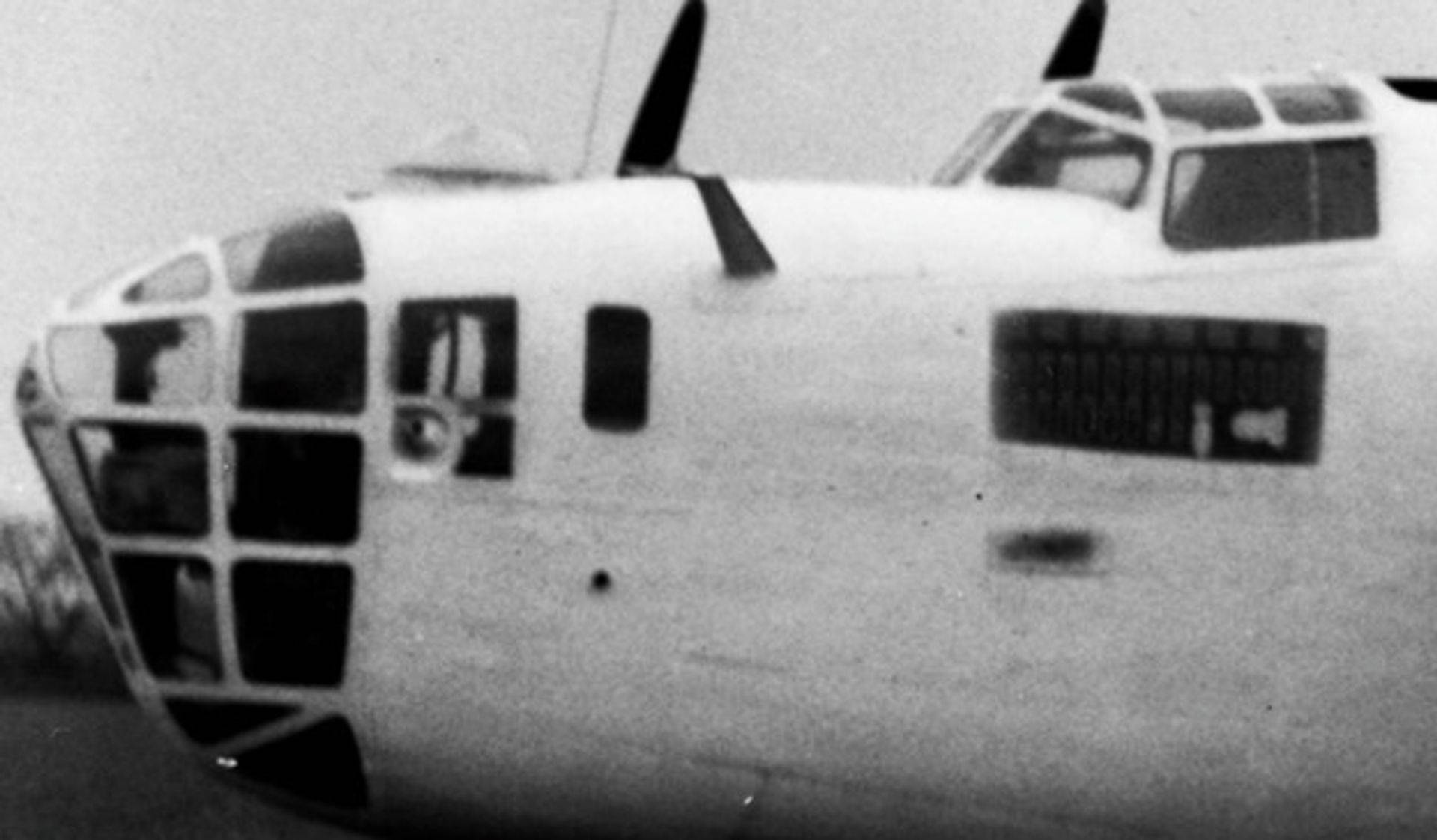
And the photo of Thar She Blows “Again”:

He noted that:
1. “The gun port housing on TSBA is larger than the one on First Sergeant.
2. The gun port window on TSBA is rounded on the bottom rear, where the window on FS appears to be square.
3. Also, the side (navigator’s window) on TSBA appears to have armor plating where the one on FS does not. That could have been removed to save weight I guess.”
Damn. Now he got me back into my old “Cutting Edge Modelworks/PYN-ups Decals” mindset and I couldn’t rest until I tracked this SOB down.
Back To Facts . . . Proof 127 was NOT “Thar She Blows” OR Thar She Blows “Again”
42-40127 was a B-24D-30-CO, a Consolidated-built ship in the 42-40058 to 42-40137 range (Block 35 started at 42-40138). Aside from mods that may have been made a various mod centers, we need to stay within the same block as much as possible when doing photo comparisons.
Both 42-40126 and 42-40130 were assigned to the 44th BG (neither a Ploesti veteran) and I have several excellent photos of each. Unfortunately not one of them shows the left side navigator’s window/.50 mount. Damn. Luckily many photos are available of other ships in the Block 30 serial series, so we can pin this down.
The first thing to know about Block 30 is that it initiated installation on the Consolidated production line of the .50 socket in the bombardier’s left side sighting window (directly behind the nose greenhouse). Prior to this Block all .50 “cheek” mounts were installed at the mod centers, and all had separate framing around each Plexiglas window.
Once the .50 socket was introduced on the production line (with Block 30), a single large external reinforcing panel framed both windows. In addition, the Block 30 introduced an external stiffener across the bombardier sighting window for the .50 cheek socket. All prior mounts had only an internal mount visible through the bombardier sighting window.
In the model airplane builders world, the first objection would be: “but, but, maybe it was a field mod.” No, it was not. These particular widows remained the same for these early B-24Ds throughout their combat lives. There were field mods for other items on later B-24s, but these remained as issued to the combat groups.
So:
• Separate frames surrounding the navigator window and bombardier window before Block 30, but one single large external plate reinforcing both windows starting with the Block 30.
• A short internal horizontal .50 socket reinforcing frame, visible underneath the Plexiglas, on pre-Block 30; an external support bar integral to the window reinforcing panel starting with the Block 30.
The following pics help us follow these threads.
ORIGINAL “Thar She Blows” (serial unconfirmed)
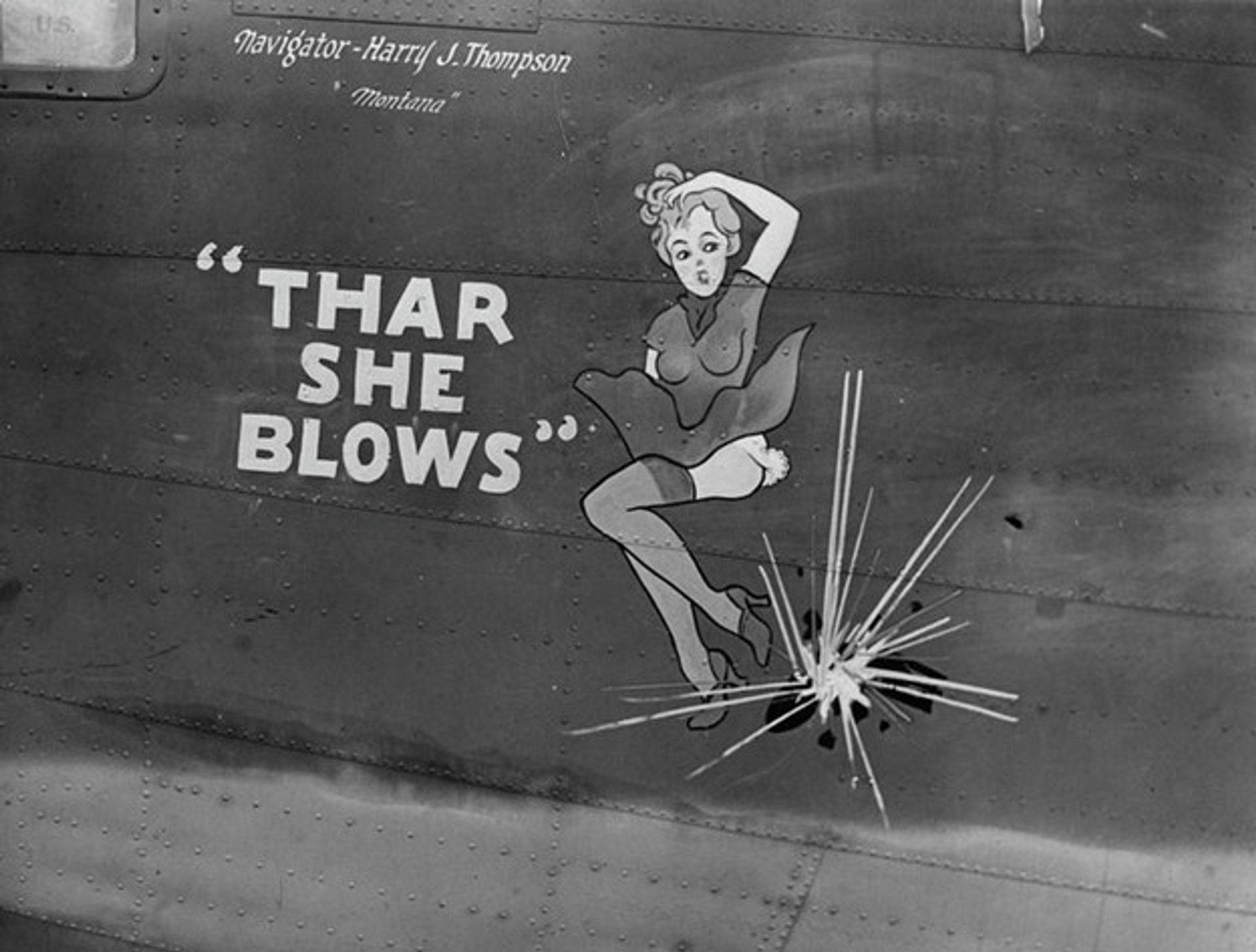
Not much of the bombardier’s side sighting window can be seen and none of the nav’s window, but it’s very clear they had separate frames. This confirms “Thar She Blows” was earlier than Block 30. While I cannot confirm the 41-23658 serial stated by Pat Schenk, it’s at least reasonable.
Thar She Blows “Again” (serial unconfirmed)

As with “Thar She Blows,” we can clearly see separate frames around the nav and bombardier sighting windows. Furthermore, we can clearly see the horizontal .50 support frame is inside the Plexiglas bombardier sighting window. Both features confirm this is also a pre-Block 30 ship. TSBA has been claimed to be 42-40130, but this is clearly incorrect as 130 was also a Block 30 and would have had the single exterior reinforcing plate surrounding both windows. In any case I have photographic documentation that 130 was assigned to the 44th Bomb Group as Avenger II. Though possible she eventually went to the 93rd, it does not seem likely. I doubt 130 was ever named TSBA.
42-40127 Nose After 458th Partial Repaint

Although the photo is not that good, we can see a large unitary plate surrounds both the navigator and bombardier windows, and the .50 socket frame support is clearly external to the Plexiglas.
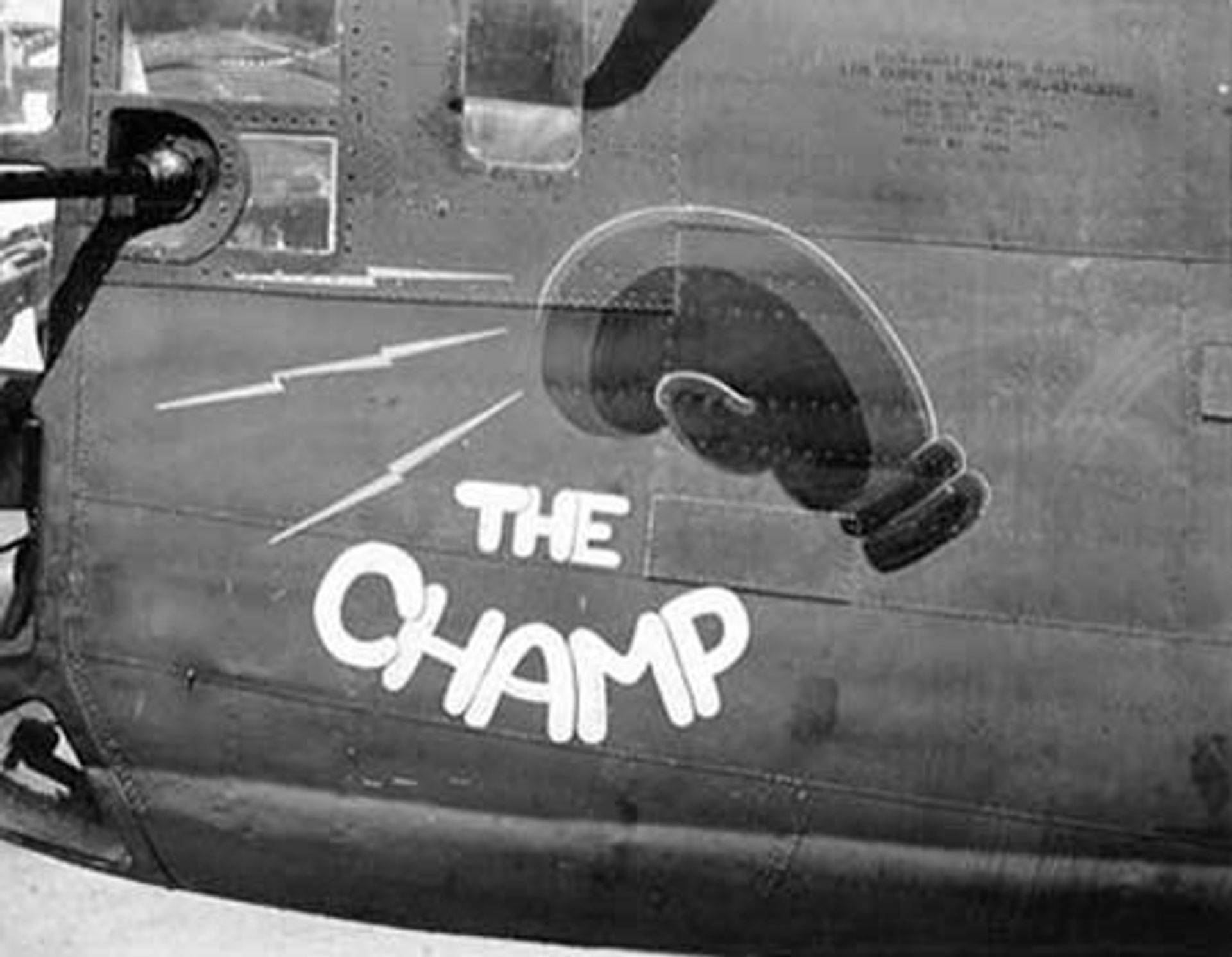
Since this is could be somewhat difficult to see in the photo above, here’s a much better pic of another Block 30 ship, 42-40060, The Champ.

And an even better pic of B-24D-30-CO 42-40082 Prince Charming showing the single reinforcing plate. If you carefully compare the panel lines on 40127 the two pics above, you’ll see they match.
It is now very clear that neither “Thar She Blows” nor Thar She Blows “Again” were ever the same ship as 42-40127.
While this analysis cannot address what name 40127 carried before coming to the 458th, it does leave me in a quandary. The 1 Jul 43 93rd name list definitely lists 40127 as “Thar She Blows,” and many documents prove that 127 definitely flew the TIDAL WAVE mission. We’ve now gone from a possible typo on the 93rd letter to a gross error. I can’t even state with authority whether TSB or TSBA flew or did not fly on the TW mission, although obviously not serialed 40127.
Now I have to dig deeper to see whether I can accurately name 40127 at the time of TW: it’s possible it carried no name at the time, but this seems unlikely since it was in the original complement of 93rd ships to come down from the UK.
Please let me know if you have photographic proof of:
1. The correct serial number for “Thar She Blows”
2. The correct serial number for Thar She Blows “Again”
3. The correct nickname applied to 42-40127 at the time of TIDAL WAVE
I hope you found this analysis interesting!
For original article click here.
Disposition
B-24D-30 CO 42-40127 FIRST SERGEANT
OD
RCL: Z Z5 (754)
ex 93rd BG where it was renamed BUCKET OF BOLTS. Ploesti veteran.
First assembly ship.
Destroyed by fire 27 May 44 on the ground at Horsham St Faith after an accident involving flares.
Salvaged 27 & 28 May 44.
Accident Rpt. 44-5-27-522

